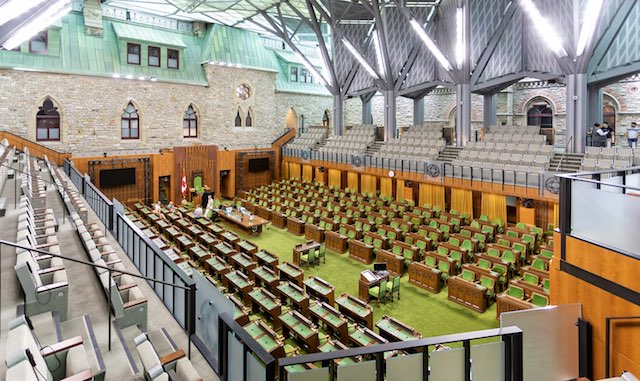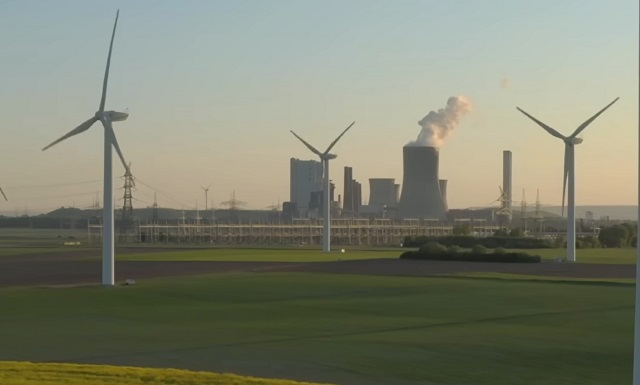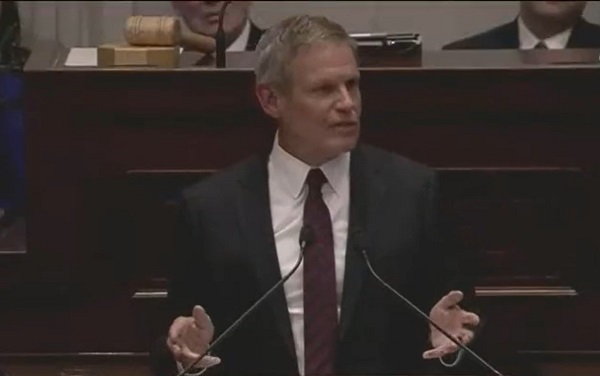Opinion
Paul Wells: A poor choice of venue

From Paul Wells on Substack
The Liberals wanted to beat Pierre Poilievre in the House of Commons. No such luck.
On Pierre Poilievre’s first day as leader of the Opposition, eleven months ago, the Liberals’ best available minister sought to frame the battle ahead.
“We are going to see two competing visions over the course of this session,” Randy Boissonnault said, largely ignoring Poilievre’s first question.
“The first is our government’s plan to support Canadians and those who need it most. The second is that of the Conservative Party and members of Parliament who would leave Canadians to their own devices.”
Boissonnault’s answer struck me at the time as the best available information about the Trudeau Liberals’ plan for Poilievre. It’s worth revisiting.
Paul Wells is a reader-supported publication. To receive new posts and support my work, consider becoming a free or paid subscriber.
At the time, late in September 2022, Poilievre had won a resounding victory over the rest of the Conservative leadership field. The Trudeau government had an opportunity to influence votes’ perceptions of the Liberals’ latest opponent. Many observers assumed the Liberals would do this through some sort of ad campaign, as Stephen Harper had done against Paul Martin, Stéphane Dion and Michael Ignatieff, and tried to do against Trudeau, always well ahead of an election.
Boissonnault was announcing the Liberals wouldn’t do this. The main parties’ “two competing visions” would become clear throughout “this session,” in the venue where life is divided into sessions: Parliament. (My procedure-wonk friends will remind me that a “session” isn’t a school year, it’s the space between a Throne Speech and a prorogation or dissolution. Still, a year is a good time for an interim check-in, and plainly things are happening.)
I’m going to say it hasn’t gone well for the Liberals. A stack of polls tells me so, but we don’t only need polls. The Cabinet has gathered in Charlottetown to hear from an academic who calls the state of housing in Canada “a crisis.”Meanwhile the guy who ran economic policy for Justin Trudeau’s government for seven years is calling affordable housing “the urgent economic need of today.” Imagine how many urgent economic needs we’ve heard about since 2015. Maybe the urgent economic need all along was to resist the urge to treat every need as urgent. Anyway the Liberals expected they could govern by picking issues that would work to their advantage. Instead an issue has been picked for them.
Poilievre made no secret of his own plan to use housing shortages to illustrate “two competing visions.” Every time he stood that day he repeated that housing prices had doubled under Trudeau. Boissonnault’s response was, in some cases, to ignore the question (“Mr. Speaker, let us talk about how people can pay their bills with our new dental plan”) and in others, to mention the day’s latest government policy: a one-time top-up to the Canada Housing Benefit, which would be worth $500 for people whose family income was under $35,000. The top-up began two months after Boissonnault spoke and ended three months after that, in March of this year. After that, Boissonnault and his colleagues would leave Canadians to their own devices, we might say.
Thank you for reading Paul Wells. This post is public so feel free to share it.
Why has the parliamentary session, as glimpsed since last September, been a bad choice of venue for the Liberals’ narrative of two competing visions? A few reasons.
First, most Canadians ignore Parliament. This trend has accelerated in the last eight years. Partly because the audience for just about any given thing in our society has declined as attention spans fragment. Partly because it’s increasingly obvious that the House of Commons no longer provides even occasional surprise. Stephen Harper and Jean Chrétien used to say surprising things. Not often. But they’d reveal a conversation they’d had, or announce a decision, or cleverly sabotage a question’s intended effect. This crew is earnest and general. Always.
Second, Poilievre likes Parliament more than Trudeau does. Not in the sense that he respects it as an institution. Neither of them does. The whole notion is quaint. But Poilievre looks forward to Question Period, rehearses for it, relishes its limited opportunities. Trudeau, who systematically demotes naysayers, has never believed he should have to put up with any in the middle of his workday.
It’s easy to understand a guy disliking Parliament. But disliking Parliament makes Parliament an odd choice of venue for making any kind of important case.
The third problem with the notion that an ordinary governing year would define Poilievre is that it allowed Poilievre to specialize while the government generalized. Any Canadian government has to manage the normal array of dreary files, the bilateral relationship with the U.S., the post-pandemic recovery, ports and bridges and health transfers and public-sector strikes. Not every day can be a message day, even for a government that tries to make its every act a message. That’s why governing parties often prefer to put the “governing” and “party” parts of their mission under distinct command structures.
It’s often said that in making his campaign team his governing team, Trudeau limited the effectiveness of his government. It’s increasingly clear the problem goes the other way too: How can a Prime Minister’s Office think clearly about politics?
The upshot is that while the Liberals have been fitfully defining their opponent he has been diligently defining them. It has gone better for him than for them. A new poll, by Abacus for the Toronto Star, shows that “more [respondents] think Poilievre is genuine than phoney, strong instead of weak, down to earth instead of elitist.” This will be vexing news for readers who think the Conservative leader is phoney, weak and elitist, but in politics the goal isn’t to believe your own beliefs really hard, it’s to get other people to believe them. Here the Liberals’ problem is much like their problem on housing: It’s as though they just realized they have a job to do.
A note to readers as an election approaches, whether that election happens in 2023, 2024 or 2025. If you have a strong emotional investment in anyoutcome in that election, this newsletter will certainly disappoint you. I’m not here to help Poilievre. I’m not here to defend Trudeau. I see qualities and flaws in each. I might even amaze everyone by mentioning the NDP, once or twice. This isn’t an artificial stance born of some mandate for “objectivity” or, worse, “balance.” I’m selling my opinions here. But my opinions don’t line up cleanly with the party lines in most elections and they won’t in this one.
Readers who are inclined to work fulltime to correct other readers’ opinions should remind themselves that the election won’t be won or lost in the comment board of the Paul Wells newsletter. Thanks, as always, for your support and interest.
Brownstone Institute
Book Burning Goes Digital

From the Brownstone Institute
BY
In March 2021, the Biden White House initiated a brazenly unconstitutional censorship campaign to prevent Americans from buying politically unfavorable books from Amazon.
The effort, spearheaded by White House censors including Andy Slavitt and Rob Flaherty, began on March 2, 2021, when Slavitt emailed Amazon demanding to speak to an executive about the site’s “high levels of propaganda and misinformation and disinformation.”
Their subsequent discussions remain unknown, but recently released emails from the House Judiciary Committee reveal that the censors achieved their intended result. Within a week, Amazon adopted a shadow ban policy.
Company officials wrote in internal emails, “The impetus for this request is criticism from the Biden administration about sensitive books we’re giving prominent placement to, and should be handled urgently.” They further clarified that the policy was “due to criticism from the Biden people,” presumably meaning Slavitt and Flaherty.
At the time, “vaccine misinformation” was parlance for inconvenient truths. Five months after the Amazon censorship crusade, Twitter banned Alex Berenson at the Government’s behest for noting that the shots do not prevent infection or transmission. Senator Elizabeth Warren (D-MA) favorably cited his Twitter ban in a September 2021 letter to Amazon calling for increased censorship of books.
A similar process occurred at Facebook. Mark Zuckerberg wrote in internal emails that the platform decided to ban claims related to the lab-leak theory in February 2021 after “tense conversations with the new Administration.” Facebook executive Nick Clegg similarly wrote that the censorship was due to “pressure from the [Biden] administration and others to do more.” Another internal Facebook email from August 2021 wrote that the company had implemented new “misinformation” policies “stemming from the continued criticism of our approach from the [Biden] administration.”
Not only does the Biden regime’s call for de facto book bans lead to the suppression of true information regarding lockdowns, vaccine injuries, and the lab-leak theory; it was also a clear violation of the First Amendment.
The Supreme Court weighed in on a nearly identical case over sixty years ago.
In 1956, the Rhode Island legislature created a “Rhode Island Commission to Encourage Morality in Youth.” Like “public health” or “inclusivity,” the innocuous language was a Trojan Horse for censorship.
The Commission sent notices to bookshops and book dealers that potentially violated Rhode Island’s obscenity laws. The book dealers challenged the constitutionality of the Commission, and the case made its way to the Supreme Court in Bantam Books v. Sullivan.
The New York Times’ description of the case from 1962 could be transposed to a modern article on the Amazon Files, but The Gray Lady has deemed the news unfit to print and has ignored the revelations entirely.
The challengers argued that the Commission acted “as a censor” while the Government “contended that its purpose was only to educate people,” the Times explained. The Government, desperate to maintain its benevolent facade, insisted its “hope [was] that the dealer would ‘cooperate’ by not selling the branded books and magazines.”
But the Government’s call for “cooperation” was a thinly veiled threat. The Commission did not just notify the booksellers; they also sent copies of the notices to the local police, who “always called dealers within 10 days of the notice to see whether the offending items had been withdrawn,” according to the book dealers.
“This procedure produced the desired effect of frightening off sale of the books deemed objectionable,” a book dealer told The Times. They complied, “not wanting to tangle with the law.”
The Supreme Court ruled 8-1 that the Committee’s reports violated the Constitutional rights of the book dealers. Justice William O. Douglas wrote in a concurring opinion: “This is censorship in the raw; and in my view the censor and First Amendment rights are incompatible.”
Here, we again see censorship in the raw; bureaucratic thugs, using the power of the US federal government, call for the suppression of information that they find politically inconvenient. They hide behind the innocuous language of “public health” and “public-private partnerships,” but the Leviathan’s “requests” carry an implicit threat.
As we wrote in “The Censors’ Henchmen,” the censorship demands from White House lackeys Rob Flaherty and Andy Slavitt are like mobsters’ interrogations. Just months after the Amazon demands, Flaherty wrote to Facebook, “We are gravely concerned that your service is one of the top drivers of vaccine hesitancy – period.” Then came the demands: “We want to know that you’re trying, we want to know how we can help, and we want to know that you’re not playing a shell game…This would all be a lot easier if you would just be straight with us.”
In other words, we can do this the easy way or the hard way. Nice company you have here – it would be a shame if something happened to it.
When companies refused to comply, Biden’s henchmen responded with scorn. Facebook ignored one censorship request, and Flaherty exploded: “Are you guys fucking serious? I want an answer on what happened here and I want it today.”
Failure to comply would threaten Amazon’s substantial government contracting operations. In April 2022, Amazon received a $10 billion contract from the NSA. Later that year, the US Navy granted Amazon a $724 million cloud computing contract, and the Pentagon awarded Amazon an additional $9 billion in contracts. Amazon also has ongoing contracts with the CIA that could be worth “tens of billions” of dollars.
“Cooperation” is a prerequisite for these lucrative agreements. Sixty years ago, the Court recognized the threat that Government demands for “cooperation” posed to liberty in Bantam Books. Ten years later, the Court held in Norwood v. Harrison that it is “axiomatic that a state may not induce, encourage or promote private persons to accomplish what it is constitutionally forbidden to accomplish.”
Since then, skyrocketing government spending and public-private partnerships have further blurred the line between state and private persons at the cost of our liberties.
The recent Amazon revelations add to the censors’ parade of horribles that have been uncovered in recent years. The Supreme Court will rule on the crux of the battle between free speech and Biden’s cosa nostra next month in Murthy v. Missouri.
Meanwhile, the revelations keep pouring in, adding to what we know but still concealing the fullness of what might actually have been happening. Adding to the difficulty is that the revelations themselves are not being widely reported, raising serious questions concerning just how much in the way of independent media remains following this brutal crackdown on free speech that took place with no legislation and no public oversight.
Energy
Market Realities Are Throwing Wrench In Biden’s Green Energy Dreams

 From the Daily Caller News Foundation
From the Daily Caller News Foundation
For two years now, I and others have been pointing out the reality that there is no real “energy transition” happening around the world. Two new items of information came to light this week that irrevocably prove the point.
It is true that governments across the western world appear to be working to bankrupt their countries by pouring trillions of debt-funded dollars, Euros and British pounds into central planning efforts to subsidize renewables and electric vehicles into existence. That reality cannot be denied. The trouble is that no amount of debt money can turn the markets and the markets aren’t cooperating.
Despite all the government largesse that has spurred major additions of wind and solar generation capacity, those weather-reliant energy sources can’t even keep up with the pace of rising demand for electricity. As a result, the markets dictated that the world consumed record levels of coal, natural gas, oil and even wood during 2023. Yes, we are still burning vast amounts of wood for electricity, despite an alleged “transition” from wood to coal which began 500 years ago.
That is reality, dictated by the markets.
Two new bits of data came to light this week that pound the final nails into the coffin of the narrative around the energy transition. A report in the Financial Times, citing data compiled by Grid Strategies, reveals that the buildout of new high-voltage transmission lines in the United States slowed to a trickle in 2023, with just 55.5 additional miles installed. That collapse comes despite the Biden government’s recognition that a massive expansion of this type of transmission lines must happen to accommodate the demands of any true “transition” to renewables.
The Financial Times quotes a 2023 assessment by the Department of Energy that found that “regional transmission must more than double and interregional transmission must grow more than fivefold by 2035 to meet decarbonization targets.” DOE admits such a pace would add more than 50,000 miles of new transmission in just 11 years, which is almost 1,000 times the pace of adds during 2023. Yikes.
A crucial aspect of that DOE study to understand is that it was conducted before we began to understand the true magnitude of additional power demands that will result from the explosive growth of AI technology just now starting to come to full bloom. It was just this past January, at the WEF Forum in Davos, where OpenAI CEO Sam Altman told the audience he believes generation capacity on the grid will have to double over the next decade just to fill the AI demands alone. That is what is needed in addition to the rising demands for EV charging, industrial growth, population growth and economic growth.
The second piece of compelling data arising this week comes from a Bloomberg story headlined, “Data Centers Now Need a Reactor’s Worth of Power, Dominion Says.” The key thing to understand about this story is that the piece is only referencing the needs of planned new data centers being built in Northern Virginia to feed AI development in that tiny sliver of the United States.
This key excerpt from the story says it all: “Over the past five years, Dominion has connected 94 data centers that, together, consume about four gigawatts of electricity, Blue said. That means that just two or three of the data center campuses now being planned could require as much electricity as all the centers Dominion hooked up since about 2019.”
That is not just rapid growth, it is exponential growth in power demand from a single developing technology.
Demand growth needs such as this aren’t going to be filled by unpredictable, unreliable, weather-dependent generation like windmills and solar arrays. And let’s face it: The United States is not going to be able to continue expanding renewables without finding some way to create a massive expansion of transmission. Why build the generation if you can’t move the electricity?
What it all means is that all the grand Biden Green New Deal plans to shut down America’s remaining coal fleet and much of its natural gas generation fleet are going to have to wait, because the market will not allow them. That’s reality, and reality does not care about anyone’s green transition dreams.
David Blackmon is an energy writer and consultant based in Texas. He spent 40 years in the oil and gas business, where he specialized in public policy and communications.
The views and opinions expressed in this commentary are those of the author and do not reflect the official position of the Daily Caller News Foundation.
-

 Economy1 day ago
Economy1 day ago‘Gambling With The Grid’: New Data Highlights Achilles’ Heel Of One Of Biden’s Favorite Green Power Sources
-

 illegal immigration1 day ago
illegal immigration1 day agoBiden’s DOJ Threatens To Sue Another State For Enforcing Immigration Law
-

 Energy21 hours ago
Energy21 hours agoMarket Realities Are Throwing Wrench In Biden’s Green Energy Dreams
-

 ESG22 hours ago
ESG22 hours agoTennessee Taking Lead In Protecting Civil Rights And Free Enterprise—And Stopping Political Debanking
-

 International1 day ago
International1 day agoTrump campaign says he will pardon Jan. 6 prisoners on ‘case-by-case basis’ if re-elected
-

 Opinion2 days ago
Opinion2 days agoMisleading polls may produce more damaging federal policies
-

 illegal immigration1 day ago
illegal immigration1 day agoMore Chinese Illegal Migrants Apprehended At Southern Border In Two Days Than In All Of 2021: REPORT
-

 conflict1 day ago
conflict1 day agoNYPD says protesters had weapons, gas masks and ‘Death to America!’ pamphlets









